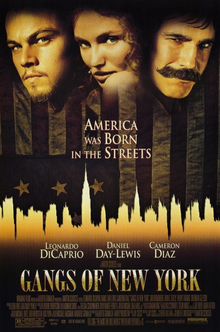 |
| Jim Broadbent in Moulin Rouge! |
Satine: Nicole Kidman
Harold Zidler: Jim Broadbent
Toulouse-Lautrec: John Leguizamo
The Duke: Richard Roxburgh
The Doctor: Garry McDonald
The Unconscious Argentinean: Jacek Koman
Satie: Matthew Whittet
Marie: Kerry Walker
Nini Legs in the Air: Caroline O'Connor
Audrey: David Wenham
The Green Fairy: Kylie Minogue
Chocolat: Deobia Oparei
Director: Baz Luhrmann
Screenplay: Baz Luhrmann, Craig Pearce
Cinematography: Donald McAlpine
Production design: Catherine Martin
Film editing: Jill Bilcock
Music: Craig Armstrong
Costume design: Manolo Blahnik, Catherine Martin, Angus Strathie
The newspaper I used to work for had, at its heyday in the late '90s and early '00s, two staff film critics, with the result that at the end of the year, readers were given two 10 best and 10 worst lists of movies. Moulin Rouge! made one critic's 10 best list and the other's 10 worst. Well, it's that kind of movie: It either exhilarates you or exhausts you. I have a bent toward directors who have their own idiosyncratic visions, even if the idiosyncrasies can be annoying. So I will confess to being swept away by the tide of images and sounds that Baz Luhrmann crafts for his film. I wouldn't want every movie to be like it, but for me, Moulin Rouge! is fun to watch -- maybe every 10 years or so. There are those who think that Luhrmann confuses noise with life, and I get that objection, but his pastiche musical, a blend of Bollywood and Busby Berkeley filtered through what MTV used to be, has the kind of energy you don't see very often, and it's a beautiful showcase for Nicole Kidman and Ewan McGregor, not to mention the production design of Catherine Martin, the cinematography of Donald McAlpine, and the film editing of Jill Bilcock that brings their work into a dazzling flurry of images. The objection that the film is all images -- i.e., camera tricks and cutting -- is probably justified, as is the observation that none of the leads is a real singer or dancer -- Ewan McGregor is more a shouter than a singer, and Nicole Kidman's moves are poses strung in sequence by the editor. But there's no market for Freds, Gingers, Judys, and Genes anymore, so finding people with star quality who can also sing and dance is tougher than it used to be.

